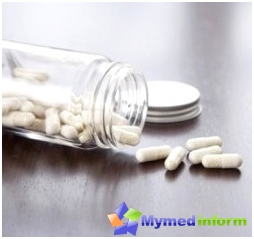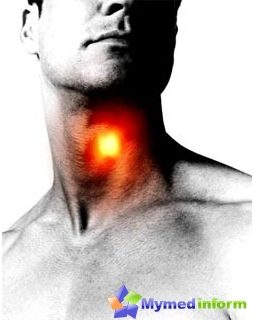Overview of the disease
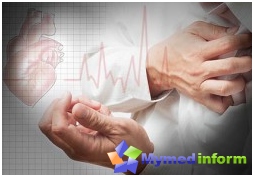
From all pathologies of the heart myocarditis is 4-11%. However, the light forms of this disease flowing without a bright and clearly pronounced clinical picture, which to identify harder, are much more common. For the first time, the study and study of inflammation of the muscles of the heart began to engage in the first quarter of the nineteenth century. Myocarditis can develop under the influence of a number of infections (culprits are viruses, microbes, fungi, simplest), physical, chemical and allergic factors (burns, injuries, effects of ionizing radiation), with heart transplantation and autoimmune diseases. Depending on how damaged heartcakes, how weakened their ability to perform their functions, the flow of pathology occurs in the following forms:
- Cardigenous - for it is characterized by cardiogenic shock, dysfunctional lesions of the left ventricle, many foci of inflammation, the destruction of myocardial cells. But if assistance was provided in a timely manner, you can hope for complete recovery, and damaged areas of the tissue will be restored.
- Acute - manifests heart failure, developing as a result of border myocarditis, fabric after this form is only partially restored.
- Chronic active - it combines all the features mentioned earlier, the development of cardiomyopathy, the foci of inflammation is preserved even after recovery, laboratory studies show fibrosis and giant cell sizes.
- Chronic persistent - the initial manifestations of the disease are absent, the left ventricle is functioning normally, the border myocarditis (active) is gradually developing, leading to the development of heart failure, which is preserved and after the inflammatory response.
The overwhelming majority of cases of identified myocarditis are successfully cured without dangerous consequences for the human body due to the arsenal of doctors with high-tech diagnostic methods. Severe forms ending with lethal exodus develop extremely rarely. It is very important in time to recognize the pathology, to quickly designate the patient treatment in order not to give a chance to develop other concomitant agers.
Symptoms of myocarditis

If the doctor suspects the inflammation of the muscles of the heart, then for the formulation of an accurate diagnosis, it needs to have data on the ECG dynamics (electrocardiography). At myocardium, the size of the heart increases, sharp and continuing progressive stagnant heart failure, cervical veins swell.
In the course of the heart survey may manifest itself:
- muffled;
- Rhythm Galopa;
- Systolic noise at the top of the heart muscle, not associated with the first tone, when changing the position of the body, its intensity does not change;
- Stagnation in lungs.
To clarify the diagnosis, the doctor may appoint:
- Radiography of the chest (it shows whether the dimensions of the heart are increased, are there signs of partial moile stagnation).
- Blood analysis In the laboratory (general, immunological and biochemistry).
- Intricultural (endomyocardial) biopsy (shown in the serious pathology).
- Echo-kg (allows you to identify pathological changes in myocardium).
- Magneticoresonance and positron-emission tomography (in order to visualize the areas of violation and myocardial necrosis).
Recommendations for treatment
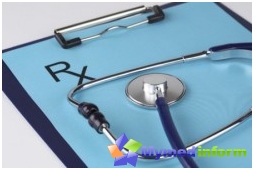
With medium and heavy degrees of myocarditis, patients are hospitalized at mandatory. Only light forms of this disease are treated outpatient. Patients need rational (full) nutrition, dishes should prepare with the restriction of the addition of cooks in them. You should refrain from alcoholic beverages, cigarettes. Physical activity for the period of illness should be significantly reduced. In the first weeks of the disease, it is necessary to observe the bed.
And now the MirSoveto lists the basic principles of drug treatment of myocarditis:
- All the forces are sent to the source of inflammation. When establishing its perpetrators, antibacterial, antiviral or antiparasitic drugs are prescribed.
- Nonspecific anti-inflammatory therapy comes down to use Ibuprofen, Indomethacin, Voltairen, Ksefocam, Meloxicam, glucocorticosteroids (with immunosuppressive action, for example, prednisone).
- Antihistamines are shown to suppress allergies.
- To improve metabolic (exchange) processes in myocardium assign Panangin, Asparkamka, potassium orotat, cocarboxylase, riboxin, ATP.
- Inhalation of oxygen.
- In parallel, symptomatic treatment of emerging complications or concomitant diseases is carried out.
Features myocarditis
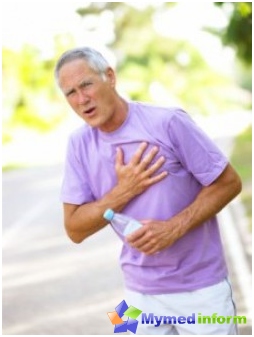
The most common types of myocarditis:
- Infectious - arises due to the introduction of infectious agents in myocardium (viruses, fungi, bacteria). This myocarditis is particularly often developing with inflammation of the respiratory tract, flu, measles, rubella, epidemic vapotitis, diphtheria, scarletin, HIV infection. When infectious agents begin to destroy myocardial cells, immune antibodies come into fighting. There is a destruction and destruction of infected cells, myocardial destruction is observed. Gradually, these areas are replaced by a connective tissue, which leads to cardiosclerosis, then compensatory myocardial hypertrophy. If the inflammation of myocardium is caused by bacteria, the foci of injections containing bacteria. With this myocardium in the first weeks of treatment, it is impossible to assign NSAIDs and glucocorticoids.
- Allergic myocarditis is one of the manifestations of an allergic reaction that occurred for infection, whey preparations, drugs, toxins ... Such pathology is usually developing in the heap departments located on the right or in the interventricular partition. If the necessary treatment is not carried out, this is fraught with diffuse cardiosclerosis occurring with dystrophic lesions of muscle fibers. In the future, everything goes to rheumatic heart.
- Idiopathic myocarditis Abramov-Fidler - the nature of this disease is unclear, here myocarditis is combined with heart failure, conductivity impairment and rhythm, formation of bunches (thrombov). The course of this type of myocarditis is acute, may end with a fatal outcome. First, the fabric collapses in the center of inflammation, then the scarring is borne, which leads to obvious cardiosclerosis.
The duration of treatment and recovery period is determined by different factors, including the severity of the disease, general well-being and efficiency of comprehensive therapy. With a secretive (latent) flow of inflammation of the heart muscle, spontaneous restoration by the forces of the body is quite possible. In more severe cases, you must help doctors to avoid complications. After transferred myocarditis, you need to be observed for a cardiologist for some time.



